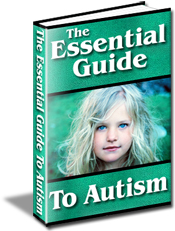Autism And Communication
Click Here To Know The Simple Methods To Effectively Spot The 31 Signs of Autism
It was the great American Financer, Bernard Baruch that said ?Feelings are 55% body language, 38% tone and 7% words? in other words, its not just what you say but the way that you say it. On the other hand, only the words are required for actual communication and the body language and tone are the social aspects that help people to understand a great deal more about what the words mean.
One of the issues with Autism or Asperger Syndrome is that there are distinct difficulties in communication that can occur on all three of these levels. It is well known that people have described communicating with autistic people as difficult thinking that they are ?nerdy? or ?weird?.
If you look at communication as purely words and that the body language and tone are social aspects then quite often it is not the communication that is a problem.
Autistic people often have difficulties with social understanding and as children become older the shift towards the social part of communication becomes greater. When communication does becomes 93% social then if they are not understood they often feel more comfortable to avoid communication all together because it becomes too difficult. Hans Asperger himself was described by others as 'remote' in that he distanced himself away from others.
For autistic people that cannot produce the words there are a number of therapies or treatments such as music therapy or the controversial facilitated communication. These treatments (not cures) help people to communicate through a different medium.
Other autistic children may communicate with words but lack understanding or the ability to recognise the social side of communication (body language and tone). But also they themselves may not be communicating with their body and tone. Their body language can be awkward or uncomfortable, with eye gaze and an apparent lack of engagement.
The speech can be monotone or non-emotional and the volume may be loud or not fitting to the situation. But also the word structure may not be clear, the language can be literal, there may be interruptions and the subject may become confused which is likely to be a reflection of how confusing certain things are to them.
There are other therapies that help them understand concepts such as recognising emotions. Picture or art therapy is useful to help give visual guides to things they will see in communications. Music therapy is sometimes used to help understand the back and forth of conversation.
And speech therapy is a commonly used therapy to help develop the muscles in the mouth to help with pronunciation and articulation.
So while communication may conventionally be on these three levels of body language, tone and words, there are many other ways to communicate and many people will tell you that communicating with autistic children on their level is very rewarding because they are all geniuses in their own right that have a lot to talk about.
Ben Sidman is a Parent of an amazing autistic child and founder of http://www.autism-support-community.com - an informative and friendly web site for parents with autistic children.

